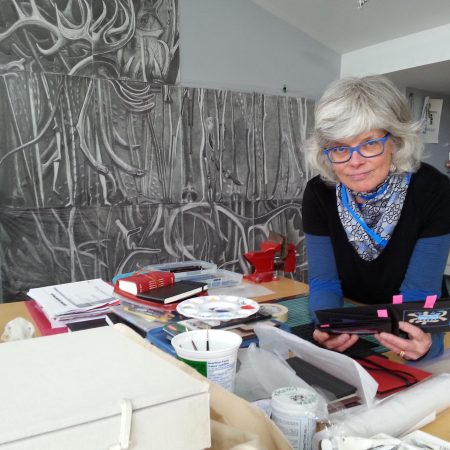Rosalind Krauss’ Sculpture in the Expanded Field had a seminal influence on how you engage with objects, can you expand?
That essay, and her book Passages in Modern Sculpture, continue to be very significant texts for many artists, myself included, because they proposed a new way of thinking and speaking about the history and contemporary practices of sculpture. Sculpture is discussed in relation to site, landscape, architecture, structure (and their inverses), which moved the discourse away from formal analysis and historicism, which are very linear and patriarchal frameworks. Krauss’s writings from that period were some of the first texts about postmodernism and sculpture, and they blew open the canonical approach that had been so dominant. These ideas coincided with my own developing interest in the relationship of sculpture to objects which we might place in other categories, such as tools, implements, devices, furniture and artifacts. At that time (1979-80) I was making large, concrete sculptures, and I started to photograph myself leaving the studio after long hours of casting. The last casting experience resulted in a series of images entitled Walking Out on Sculpture.
You have worked with various objects, some gynaecological, some ritualistic. There is a phenomenological way in which you respond to objects; that their meaning and purpose may be designed for functionality, but their true purpose is only activated by the actions put onto them by humans (maybe also animals?). For example, can you elaborate on the meaning and use of the walking stick in your 2007 Banff residency Walking and Art, a thematic explored at length in following works as well?
In 2007 I started to focus on walking and the attendant objects of walking (such as walking sticks) in my work. I saw the walking stick as a very basic tool, something that exists as a tool only when it is in the hand of the walking person. The rest of the time, it is a stick. When used as an aid in human movement, it functions as a rudimentary prosthetic, a technology for extending the body (with all its sensorial potential, consciousness, memory, will, desire) into the world. Such an object also functions as a probe or sensor, or perhaps a conduit, relaying information about terrain, surfaces and topography back to the person using it. The walking stick moves over the contours of the surface in real time, each step like a way mark.
Is walking political?
I am coming to think that it is, very much so. Certainly the right to walk, to move freely and independently through public space, is contested in many places. Walking clearly has political dimensions; in a global context, most of the people who are walking are refugees. Millions walk to find water, food, shelter on a daily basis. Walking is also very political in terms of ability and accessibility. I think of walking as a broad and diverse range of self-powered mobilities.
Can you explain what you mean by the “topography of experience”, and how this has entered your body of works in the past?
I think this connects to my earlier remarks about the movement of the walker, and the walking stick, over the contours of the land. The multiple points at which a contact is made between the step and the land create an invisible mesh or network that is like a second skin over the surface. Within this topographic mesh are points where a deep appreciation of time can also be gained. Walking a path or trail that has been in existence for a long time can bring about this uncanny feeling, as can adopting a specific view that has been described by others in the past.
In the 2000 exhibition Test Patterns, you observe repetition and obsession through collage, wallpaper design and stacked sculptures. Though applying wallpaper requires patience, and collaging can be freeing, there is still a feeling of anxiety embodied in the processes of each. You have talked about your need of being composed but not controlled, what meaning do these terms have for you?
For me, the activity of composition is the essence of art making, in that it separates out what will be considered, which elements will be within the frame (and which will not), and how they might be positioned in relation to each other. In my work, I often set up a clearly defined conceptual (or composing) framework, and then explore and observe the possibilities of what happens with that framework. This is a method for making physical objects such as collages or sculptures, and also for creating time-based art works such as public walking events. I may set circumstances and parameters into place, but the actions and behaviours of participants are outside my control.
What’s next?
I am part of a collaborative group called Narratives in Space and Time Society (NiS+TS), and we make walking-based public art projects that employ mobile media as well as analog methods. We are currently working on a long term project, Walking the Debris Field: Public Geographies of the Halifax Explosion, leading up to the centenary in 2017. One of the exciting things about this work is the opportunity to learn so much from, and with, other participants. In addition to the NiS+TS collaboration, I am continuing to create work as a solo artist, and will be exhibiting locally this summer: Walk With Me, a “circulating library” of inscribed walking sticks is being shown outdoors at the Historic Gardens in Annapolis Royal. I will have other works in group exhibitions in July and August at HERMES and at the Craig Gallery, and a one week solo exhibition, Nothing is Lost, Everything is Connected, will be on view at the Anna Leonowens Gallery from June 8-13.
